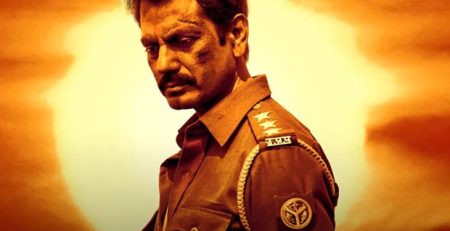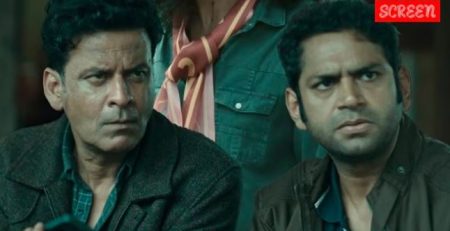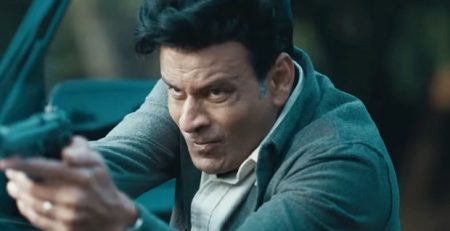YRF Spyverse at an Inflection point: Long gaps, aging stars and repetitive plots worry trade experts; reboot urged to avoid becoming dated
Share this post
The YRF Spy Universe was envisioned as Bollywood’s answer to Hollywood’s Marvel and DC franchises- a shared world of larger-than-life heroes, crossover spectacles, and box office dominance. Beginning with Ek Tha Tiger over a decade ago, it has delivered massive blockbusters like Tiger Zinda Hai and Pathaan. For a franchise built on scale, spectacle, and superstar muscle, the YRF Spyverse suddenly finds itself at a crossroads. War 2, touted as the next big tentpole after Pathaan and Tiger 3, was expected to push the universe into a new orbit. Instead, its stumbling box office performance has sparked uncomfortable questions: has the spy template gone stale, has the long-gap release strategy diluted momentum, and is the franchise struggling to stay in step with a new generation of audiences raised on global OTT content? Trade voices are nearly unanimous – what once felt like an unstoppable juggernaut now needs a hard reset, from tighter scripts to fresher faces.
#War 2
YRF Spyverse at an Inflection point: Long gaps, aging stars and repetitive plots worry trade experts; reboot urged to avoid becoming dated
War 2Photos: Tiger Shroff, Anil Kapoor, Hrithik Roshan and others grace the special screening of War 2 at YRF StudiosWar 2War 2War 2War 2War 2War 2
Next
Film trade analyst Atul Mohan believes audiences have started to see through the sameness of the stories, “I think it is getting repetitive – somebody will need to be saved or there will be an enemy, or they will fight amongst themselves, etc. The people have also started feeling the same with the Spy Universe films.”
That sentiment reflects a growing concern that while scale and star power remain intact, the narratives no longer surprise.
Exhibitor and distributor Akshaye Rathi places the Spyverse’s situation in a global context, “Any universe or franchise now and then needs that reboot. Look at what’s happening with Marvel; they are going through a reboot. What happened with DC for its revival was a kind of a reboot. If you look back, this whole Spyverse retrospectively speaking started with Ek Tha Tiger, which was over a decade ago. Technically, it’s had quite a run. The people who grew on Ek Tha Tiger are a slightly older than the people who frequent cinemas today.”
Rathi also points out that irregular scheduling has weakened the brand, “You can’t have a gap of multiple years between two films of the same universe. To develop and nurture a universe, you need to have at least one or two films coming out every year, like Marvel and DC does. Here the gaps between the Spyverse films have been so long – in some cases, 2, 3 or 4 years. Then it becomes tough to nurture the fan following for that universe.”
Looking forward, he stresses the need for fresh blood, “For a universe, you need reigning superstars but also upcoming stars. Both Shah Rukh Khan and Salman Khan are humongous superstars. But for a universe to have its legs, there needs to be a vision for the next 10 years. Shah Rukh Khan and Salman Khan 10 years from now are going to be 70-year-old gentlemen. So, it’s necessary to include fresher and younger talent; stars who are on their rise rather than those who are at their peak.”
Girish Johar, Zee Studios, agrees that the creative template must evolve, “I do believe that. Something new has to be presented to the audiences. We need to understand that our target audience is the youth, who are catching up global content on OTT platforms and cinemas and watching complex and far-sighted storytelling, especially spy and undercover movies. This is the same target audience that a metro city has for a film like War 2. So you probably need to give them more, which they don’t find in other content. The storytelling, narrative and ideas have to be reworked, so that the new young age audience finds some resonance with them and they don’t find it dated.”
From the exhibitor’s side, Satadeep Saha, CEO of SSR Cinemas Pvt Ltd echoes the demand for tighter writing, “Definitely. It definitely needs a better screenplay. I feel a tighter screenplay would have been better. I am sure from next time onwards, they (makers) will keep this in their minds and then they will plan accordingly.”
Vishek Chauhan, owner of Roopbani Cinema in Bihar, makes a cultural distinction that cuts to the heart of the issue, “War franchise is not desi cinema. This is like a playbook from Hollywood studios. This is how a Hollywood film is made. A desi film is made very differently. There are emotions. There is a different kind of filmmaking; the sensibilities are different. Indian cinema is multi-genre filmmaking.”
He also underlines why replicating Marvel’s model is difficult, “Marvel has around 2000 books and comics for story arcs and characters. But you don’t have this for the Spy Universe. You are creating things out of thin air. There is no relatability. For example, you made NTR Jr. enter the film. Then you are explaining how and from where did he come from. But in Marvel universe, people already know who is who.”
The trade consensus is clear: the Spyverse cannot survive on repetition, sporadic releases, or aging stars alone. To remain relevant, it must recalibrate its storytelling, sharpen its screenplays, and inject fresh talent. Otherwise, the fatigue evident in War 2 could deepen into franchise burnout.












Leave a Reply